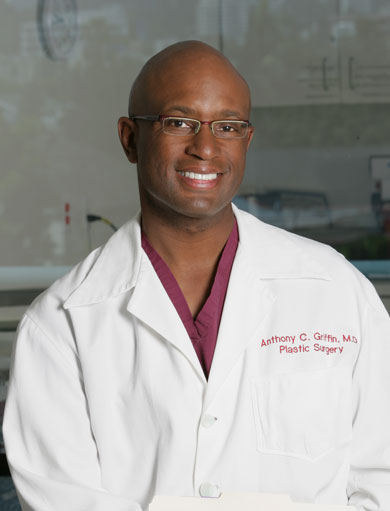Keloid Scars
What are Keloid Scars?
Keloids are raised areas of excessive scar tissue that develop at the site of a skin injury, regardless of the cause. They can result from trauma, surgical wounds, and from even minor skin damage like burns, blisters, vaccinations, acne and piercings. They are benign (non-cancerous) lesions, and are not contagious.
In normal wound healing, the body attempts to repair the wound, by depositing collagen around the wound in an effort to seal and protect it from injury. That type of scar usually fades over time, becoming less and less noticeable. In contrast, Keloid scars don’t stop growing and can invade healthy tissue beyond the area of the original wound. They can develop up to a year after surgery or injury. This type of scarring can affect a patient’s self-esteem and quality of life.
What do Keloids Look Like?
Keloids are raised, firm or rubbery, shiny lesions that vary in color, from red or purple to dark brown. They are can be painful, sensitive to touch, cause severe itching, and are aesthetically unpleasing.
Sun exposure or tanning may discolor the scar tissue, making it slightly darker than the surrounding skin.
Hypertrophic scars or Keloids?
It is important to distinguish keloid scars from hypertrophic scars. Hypertrophic scars are the result of excessive scar tissue, but do not grow like keloids. Hypertrophic scars are raised and shiny, thick and red, and may take 2-3 months to develop after a wound. They may also itch or be painful. But, they do not extend beyond the boundary of the wound, and they usually improve over time.
What causes Keloid scars?
The cause is not known, but there is a genetic component. We inherit our scar forming qualities from our parents. Keloids runs in families. While keloids result from excessive collagen deposition, the main cause of Keloid formation is tight wound closure, causing excessive tension on the wound. Thus, anything that pulls or puts tension on the wound, including surgical sutures, can stimulate formation.
Keloids develop on the surface of the skin, not internally, in certain high-tension areas, like the neck, chest, trunk, back, and ears.
Who is at Risk for Keloid Scars?
Keloids are common in young people, ages 10 to 20 years. Hypertrophic scars and keloids are seen in people of all races and skin types. African, Hispanic and Asian people are seven times more likely to develop keloids, than Caucasians. African American skin tends to be thicker and more vulnerable to scarring because it’s more oily than white skin.
People of Color and Plastic Surgery
Many people of color fear plastic surgery because of their tendency to develop keloids. Dr. Anthony Griffin, MD, a world renowned Beverly Hills plastic surgeon has developed cosmetic surgery procedures and techniques that result in minimal to no scarring. He often employs an endoscope that permits many procedures to be performed with very tiny incisions. He had developed surgical materials that won’t react to ethnic skin, or provoke a keloid reaction. His meticulous suturing techniques are designed to place the least amount of tension on the incision. Tension reduction can help to keep the scar as thin as possible.
As an African American, Dr. Griffin is sensitive to the concern of people of color regarding keloid formation. He has devoted his entire career to developing scar-free surgery for scar-prone minorities. Caucasians are benefiting from his pioneering work, too.
His techniques are noninvasive and minimally invasive procedures to prevent or avoid keloid formation.
- His signature “no-tell nose job” is one example.
- He can perform an endoscopic facelift hiding incisions inside the mouth and above the hair line.
- He can bury incisions in natural creases, to reduce the appearance of surgical scars.
- Breast augmentation can be performed through the underarm area.
- He has developed fine suture closure techniques that avoid putting tension on incision sites.
Now people of color need no longer fear keloid scars from plastic surgery.
There are steps that can be taken, in addition to minimizing tension on the surgical wound, that can help to reduce or prevent keloid formation. Some of these are silicone sheets that are used after surgery to cover the wound. Injections into the scar can help. Topical creams and lasers can help to make the scar less obvious.
Dr. Griffin, Beverly Hills plastic surgeon has the credentials, skills, experience and artistic eye to offer you the results you seek. He understands that your relationship is of utmost importance. He will take time to listen to you and help you understand everything involved with your procedure. Dr. Griffin wants you to have a safe, comfortable and pleasant experience, and an outstanding result. He will show you the respect you deserve.
When considering plastic surgery, call Dr. Antony Griffin in Beverly Hills, California. Schedule a consultation. He has helped thousands of patients. You can put your trust in Dr. Anthony Griffin.
Book Online
